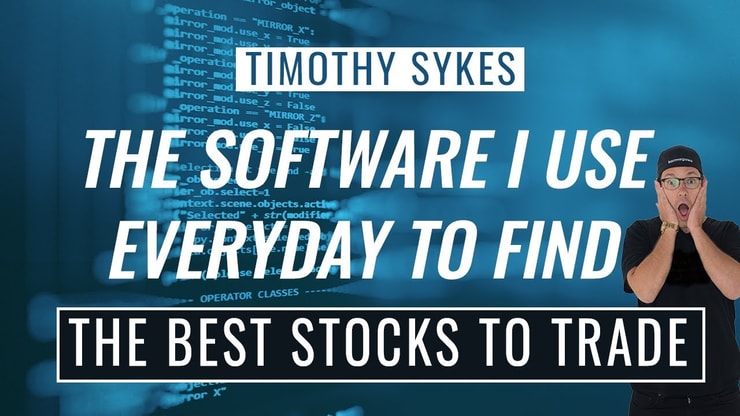Quantum computing was once just a science headline — now it’s pushing real trades. The sector’s top players are racing to scale early hardware, and investors are betting on big breakthroughs. That attention has spilled over into a group of small-cap stocks, giving traders high-volatility setups worth tracking.
Most of these names have no profits, limited revenue, and unpredictable funding. But that’s exactly why they’re penny stocks. In my experience teaching traders over the last two decades, these types of plays attract speculation, and when they move, they move fast. These aren’t long-term investments — they’re momentum trades driven by sector news, market sentiment, and short-term price action.
Before you decide to buy anything, remember: penny stocks aren’t about buying and holding. They’re about reacting. That means watching the chart, tracking catalysts, and planning every move. Here are five quantum penny stocks with setups worth monitoring right now.
Table of Contents
5 Quantum Computing Penny Stocks to Watch in 2025
| Stock | Ticker | Specialty |
| Arqit Quantum | ARQQ | Quantum Security |
| Rigetti Computing | RGTI | Quantum Hardware |
| D-Wave Quantum | QBTS | Quantum AI Systems |
| Quantum Computing Inc | QUBT | Photonic Quantum Tech |
| IonQ | IONQ | Trapped Ion Systems |
Before you send in your orders, take note: I have NO plans to trade these stocks unless they fit my preferred setups. This is only a watchlist.
Sign up for my NO-COST weekly watchlist to get my latest picks!
Arqit Quantum (NASDAQ: ARQQ)
Arqit Quantum is trying to build a future around post-quantum encryption, offering security tools for data-sensitive services that could be threatened by next-generation quantum computers. While it’s still in the early stages, the company has drawn interest for its government contracts and potential use cases in financial services and defense. The stock has seen speculative moves before and could benefit from renewed cybersecurity interest if quantum computing progresses faster than expected.
I’ve taught traders for years to look at catalysts beyond earnings. In this case, Arqit’s connection to cybersecurity — especially quantum-safe algorithms — creates a theme worth watching. It’s not about what the company is today, but what traders think it could be if quantum encryption becomes a standard in sensitive industries.
The stock’s volatility is high and liquidity is limited, which makes it a typical low-float penny play. Don’t buy and hope — track news, chart setups, and sector momentum. If this name gets sympathy momentum from larger artificial intelligence (AI) or defense-related announcements, it could offer tradable spikes.
Rigetti Computing Inc. (NASDAQ: RGTI)
RGTI has had a tough time lately, falling more than 13% after announcing an Open Market Sale Agreement with Jefferies to raise up to $350 million.
Dilution is never great news, and the stock reacted accordingly. But here’s the thing — the company still operates in one of the hottest sectors out there: quantum computing.
RGTI is building quantum processors and offering cloud quantum computing services — a space with massive long-term potential despite current challenges.
I’m watching for a technical bounce setup — and if the broader quantum sector heats up, RGTI could move fast.
More Breaking News
- Why Did AeroVironment Stock Surge?
- BIT Mining Stock Skyrockets: Should You Jump In?
- VEON’s Digital Leap: A New Era
D-Wave Quantum Inc. (NYSE: QBTS)
QBTS rallied 150%* in March 2025, followed by a 115% gain in Q2 so far. That’s not bad for a company that’s under investigation for potential fraud — but in penny stock land, controversy is often a catalyst, not a deterrent.
Plus, the company is posting real revenue growth — Q1 sales rose 500% year-over-year to $15 million. That’s one of the fastest growth rates in the quantum sector.
The California State Teachers’ Retirement System (CalSTRS) even upped their stake earlier this year — a major pension fund sniffing around can add legitimacy to a micro-cap.
Check out the latest D-Wave news here!
It’s high-risk for sure. But stocks like QBTS can deliver explosive gains on the right headline or squeeze setup.
Quantum Computing Inc. (NASDAQ: QUBT)
This stock is one of the most volatile in the sector — and that’s saying something. QUBT spiked 1,800%* to end 2024 … a jaw-dropping run that rewarded prepared traders.
Since then, the price has cooled off, but it’s still up massively on the year. And it’s not dead yet — despite the short reports trying to kill it.
On April 30, QUBT announced a NASA contract worth up to $406,000 to support LIDAR data analysis — a big credibility boost for a small-cap tech company.
Even more importantly, the company will officially join the Russell 3000 Index on June 27. Institutional funds that track the index could be forced to buy, creating buying pressure leading up to and after the inclusion.
Be patient here. QUBT’s chart is messy, but former runners often offer second or even third waves if the news flow stays positive.
IonQ Inc. (NYSE: IONQ)
IONQ has been a monster — the stock is up 418%* over the past year.
It’s one of the true leaders in quantum computing, focusing on trapped-ion technology, which many believe could be the most practical pathway to real quantum advantage.
Here’s a look at some of IONQ’s key partnerships.
Despite a bit of turbulence earlier this year (the stock sagged after a disappointing earnings reaction in February), IONQ is back in favor. Wall Street analysts are flashing strong buy ratings, and technical indicators like the 50-day EMA are bullish.
This stock is not a penny stock anymore, but the setups and catalysts are exactly the same. Look for continuation moves as quantum hype returns.
* Past performance isn’t indicative of future results.
Key Considerations for Buying Quantum Computing Penny Stocks
Buying quantum computing penny stocks is not about jumping on hype—it’s about recognizing patterns and knowing when setups align with your strategies. These are low-capitalization, innovation-driven plays that can move fast and break expectations just as quickly. Traders need to evaluate more than just prices or Reddit posts—they should analyze accessibility to news, market data, and company information to manage risk with discipline.
Penny stock markets rise and fall on random YouTube people’s advice and world trends and issues that don’t always involve these assets—just look at the DeepSeek shock in January that affected the entire tech market!
Over the years, I’ve taught thousands of traders to approach high-risk, future-focused stocks with a mix of caution and opportunity. These aren’t S&P 500 blue chips—they’re typically market-sensitive symbols tied to emerging sectors like AI-integrated quantum computing. Use trade ideas to compare setups, and build a diversified watchlist that accounts for volatility and growth potential.
If you’re serious about quantum penny stocks, you need more than hype—you need a watchlist. Picking the right targets takes research and timing, especially in a market this early. Most of these stocks trade on potential, not earnings, so knowing which ones even belong on your watchlist is half the battle. Here’s a full list of quantum computing stocks to start with.
Potential Risks Associated with Quantum Penny Stocks
Quantum penny stocks carry significant risks. They’re speculative, often tied to early-stage companies with inconsistent earnings, limited capital, and unproven technologies. Market shifts, low float, and fast-changing sentiment on platforms like Reddit or in news headlines can all amplify volatility, making it critical to monitor your portfolio closely.
In my teaching, I highlight the importance of reading beyond the banner or icon—dig into real analysis and evaluate each asset’s performance history. These stocks often show sharp dips after rallies, and traders who ignore these cycles risk locking in losses. Treat these opportunities like any high-risk investment: hedge, allocate carefully, and keep your exit plan in place.
You also need to know these stocks’ history. Here’s a watchlist from when quantum was on its all-time march in December 2024.
Should I Buy Quantum Penny Stocks?
Buying quantum computing penny stocks depends on your risk tolerance and your ability to manage high-volatility setups. These stocks can present strong short-term moves, but the odds of success increase when you wait for proper confirmation—whether it’s a catalyst, breakout pattern, or volume surge. I never recommend buying just because something is trending.
The most successful students I’ve worked with are those who treat speculative sectors with a trader’s mindset, not a gambler’s impulse. Quantum-powered equities can be disruptive and scalable, but they’re also vulnerable to broad market changes and funding challenges. Be ready to speculate smartly, hedge your bets, and stay adaptable as these stocks evolve.
This isn’t like buying Apple. Most quantum stocks under $5 are pure speculation. That doesn’t mean they’re all bad—just that you need to treat them like trades, not long-term bets. Want a better idea of how these early-stage tech plays stack up? Check out this piece on SoundHound and what it tells us about buying speculative tech stocks.
Where to Buy Quantum Penny Stocks
You can trade most quantum penny stocks on major U.S. exchanges like the Nasdaq or NYSE. Use a brokerage that provides strong market data, level 2 quotes, and customizable screens to monitor price action and volume—especially on days when things move fast. If you’re watching sectors like AI-integrated or rapidly evolving quantum tech, these tools help you capitalize on emerging trade setups.
When it comes to trading platforms, StocksToTrade is first on my list. It’s a powerful day and swing trading platform with real-time data, dynamic charting, and a top-tier news scanner. I helped to design it, which means it has all the trading indicators, news sources, and stock screening capabilities that traders like me look for in a platform.
I use StocksToTrade to scan for news, tweets, earning reports, and more — all covered in its powerful news scanner. It also has a selection of add-on alerts services, so you can stay ahead of the curve.
Grab your 14-day StocksToTrade trial today — it’s only $7!
Whether you’re following low-priced symbols or emerging tech leaders, your trading success will come down to preparation and execution. Always review the exchange listings, rights offerings, and financial disclosures before making a move.
Key Takeaways
- Quantum computing penny stocks are speculative trades — not long-term investments.
- News, partnerships, and government programs can cause short-term spikes.
- Manage your risk. Always track price action and never chase hype.
This is a market tailor-made for traders who are prepared. Stick to your plan, manage your risk, and don’t let FOMO drive your decisions.
These opportunities are fast and unpredictable, but with the right strategy, you can make them work for you.
If you want to know what I’m looking for—check out my free webinar here!
Frequently Asked Questions
Are Quantum Computing Penny Stocks Risky to Buy?
Yes, quantum computing penny stocks carry significant risks—especially for traders who aren’t prepared. These are often venture-backed, early-stage companies operating in a research-heavy, technology-focused field, which makes them highly speculative. I’ve taught thousands of students how to navigate risk in volatile sectors like this—start by reviewing the company’s financials, understanding its place in the broader securities market, and only entering a trade with a clear risk-reward plan.
Are Quantum Penny Stocks Highly Volatile?
They can be extremely volatile, especially around earnings, sector news, or sudden market shifts. These stocks often spike on image-based catalysts like press releases or presentations, and just as quickly drop when expectations aren’t met. If you’re keeping an eye on this sector, understand that timing matters—knowing how to read charts and spot momentum has helped many of my students optimize short-term trades before they unravel.
Are There Any ETFs that Include Quantum Penny Stocks?
While there are no ETFs dedicated solely to quantum penny stocks, a few technology-focused ETFs may include small allocations to companies in this space. These funds offer exposure to growth-oriented names while spreading risk through diversification—an approach I often recommend for beginner traders building a small account. Always open the fund menu or holdings report to check which companies are actually included before you buy.
How Do I Know If a Quantum Stock Is Undervalued?
Undervaluation in quantum penny stocks isn’t always obvious. Since many are pre-profit, you can’t rely on traditional price-to-earnings metrics—instead, look at market cap relative to intellectual property, partnerships, or government grants. In my experience analyzing thousands of penny stocks, some of the best opportunities come when traders identify pricing disconnects during broader sector pullbacks.
What Role Do Dividends and Withdrawals Play in These Stocks?
Most quantum penny stocks don’t pay dividends—they reinvest capital into R&D, which aligns with their high-growth, innovation-driven models. But that also means they offer little to no passive income, and withdrawing profits must come from price appreciation, not steady yield. If you’re trading for performance, focus on entries, exits, and strategy—not just holding for long-term returns. If you want solid finances, and to take advantage of the highs of qubit investment without the lows—you better diversify because you’re in the wrong lane.










Leave a reply